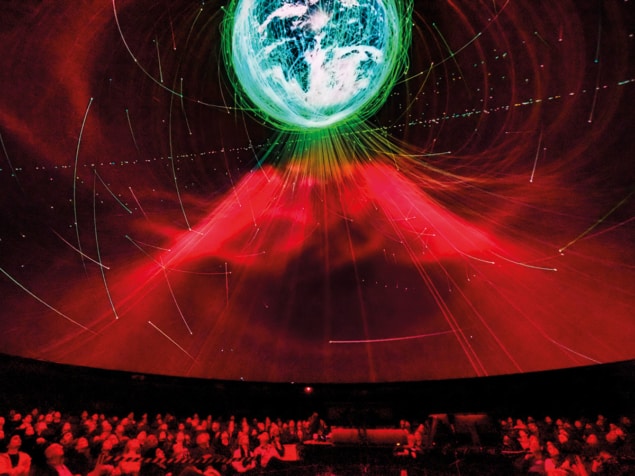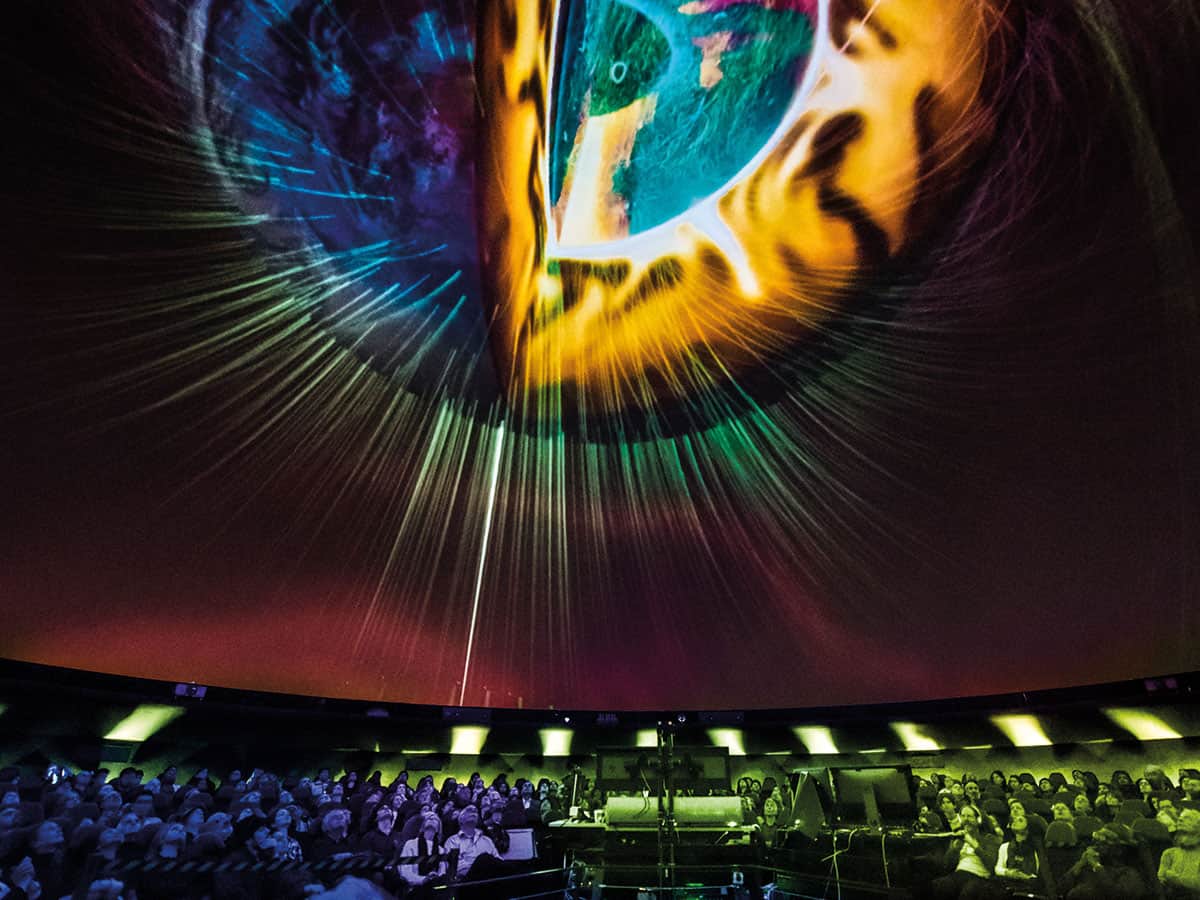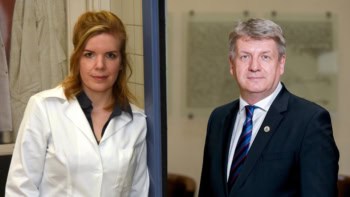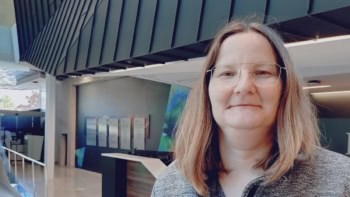The Hayden Planetarium’s new space show has high production values and a strikingly earthy flavour, finds Robert P Crease

An Apollo spacecraft blasts off from Earth and then slowly descends onto the grey, pitted lunar surface. In the next 23 minutes of the thrilling new show at the Hayden Planetarium in New York City, we meet more spacecraft: Cassini, Huygens, Voyager, Rosetta, Galileo and Magellan. “Worlds beyond Earth” is a show that treats these spacecraft as protagonists on missions to different places in the solar system, flying into planetary atmospheres, over canyons, around comets, and through dense swarms of moonlets.
The planetarium show debuted on 21 January this year at the Hayden, which is in the Rose Center for Earth and Space – part of the American Museum of Natural History on Manhattan’s Upper West Side. The show differs radically from its predecessor, “Dark universe”. That one focused on telescopes and what they had discovered about the evolution of the cosmos. Many scenes in it featured throngs of galaxies exploding in the direction of the observer, reminding me of what it’s like to look up during a hailstorm.
“Worlds beyond Earth”, in contrast, is more a travelogue, full of orbiters, flybys and landers as well as scenes of the unique places that the spacecraft encounter. The fastidious attention to details – both their colour and resolution – makes the objects as absorbing as the fossils, crystals and bugs scaled up to the size of dogs that we encounter elsewhere in the museum.
The show’s distinctive character is no surprise given that it was curated by Denton Ebel, a geologist and the first non-physicist among the half-dozen to curate a Hayden Planetarium spectacle. “I wanted it to be tactile,” he told me when I visited him in his office a few weeks before the show opened. “I wanted it to be about the stuff.” This show provides a vivid feel for the colours, textures and roughness of the surfaces that the spacecraft explore. “It’s not just showing what we know,” he said, “it’s also showing how we know it.”
An enormous support system was put into play to mount the show. Two years in the making, it was produced by a team of 15 people plus numerous consultants and advisers. A key piece of equipment was provided by OpenSpace – a $6m interactive data-visualization software. Though still under development, the show’s creators were able to use it to recreate the journey of the spacecraft, showing accurate orbital trajectories and instrument targeting. These scenes – and those involving representations of the spacecraft and the places they studied – then had to be culled to 23 minutes.

What, I asked Ebel, did he most regret going on the cutting-room floor?
The geologist paused, mentally screening outtakes from different areas of the solar system. Finally, he said, “Pluto. It’s five light-hours away, a world of ice but full of colour, and not nearly as cratered as it should be. That means that it’s active and resurfaces itself.” Ebel had great images thanks to NASA’s 2015 New Horizons flyby, when the spacecraft journeyed between Pluto and its twin Charon. “But that required three minutes that we didn’t have.”
Still, Ebel hesitated. “But I dearly miss showing the plumes that rise from the surface of [one of Saturn’s six moons] Enceladus – plumes that feed ice particles to the outer ring of [the planet]. That would have taken 30 seconds, but we didn’t even have that. I also miss not showing the MESSENGER spacecraft mapping the surface of Mercury.”
Five shows have been staged at the Rose Center since it opened in 2000. And, thanks to my children, I’ve seen every one. All the shows have had celebrity narrators: Tom Hanks, Robert Redford, Harrison Ford, Whoopi Goldberg. The astronomer Neil de Grasse Tyson, meanwhile, did “Dark universe”. The latest show is delightfully narrated by the Academy Award-winning, Kenyan-Mexican actress Lupita Nyong’o.
“Worlds beyond Earth” was written by Natalie Starkey, a cosmic chemist who now works as a physics communicator at the Open University in the UK. The original score is by Robert Miller, who has composed the scores for four previous shows, and the music was recorded at Abbey Road Studios in London. The brilliant solo acoustic guitar passages are by the musician and retired Yankee baseball star Bernie Williams, who took the trouble to check out the acoustics of the Rose Center’s dome beforehand. The planetarium’s projection system was upgraded to give it a resolution of 8000 pixels and a 26-channel sound system, including two dedicated as seat shakers.
The critical point
“Don’t think of the solar system as full of objects,” Ebel says, “think of it as full of worlds.” Each place that we come across has vastly different features – not only surfaces, textures and colours but also volcanic activity, magnetic fields of different strength and shape, and internal dynamics. Mars has the largest volcanoes in the solar system but Jupiter’s moon Io is the most volcanically active. Saturn’s moon Titan has a methane atmosphere while Venus, in Ebel’s words, is a “greenhouse gas hellhole”.
What an audience member appreciates from visiting these worlds is the unique status of the Earth, from which the Apollo 15 spacecraft blasted off at the beginning of the show and to which we return at the end. By visiting so many other places in the intervening 23 minutes we appreciate the Earth’s special character even more. This sets the stage for the final element, which makes the show so different from the others – its particular emotional mood. That mood is expressed in the show’s final image of the full Earth rotating, half lit by the Sun, and is audible in Nyong’o’s voice as she concludes her narration by saying that the Earth’s atmosphere has “the perfect blend of molecules” for human life, and that “it’s up to us to sustain it”.



